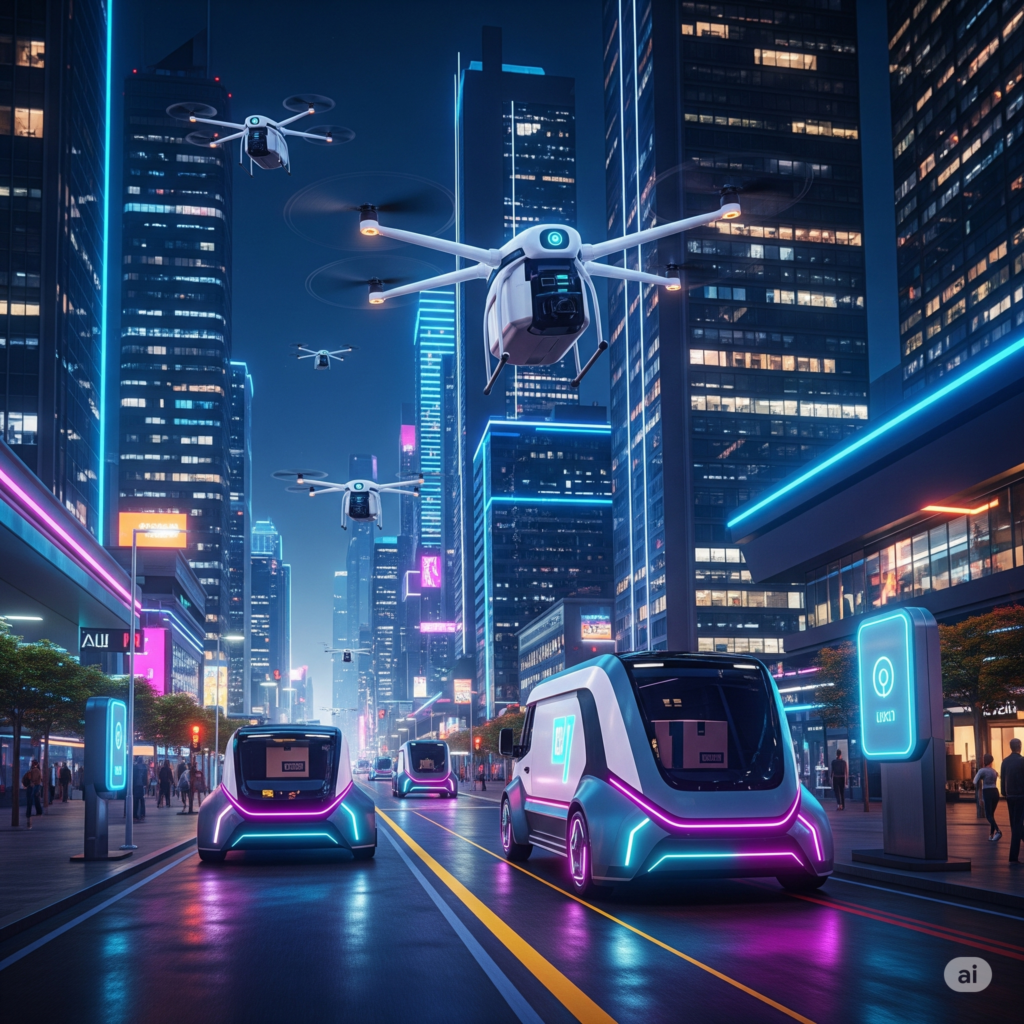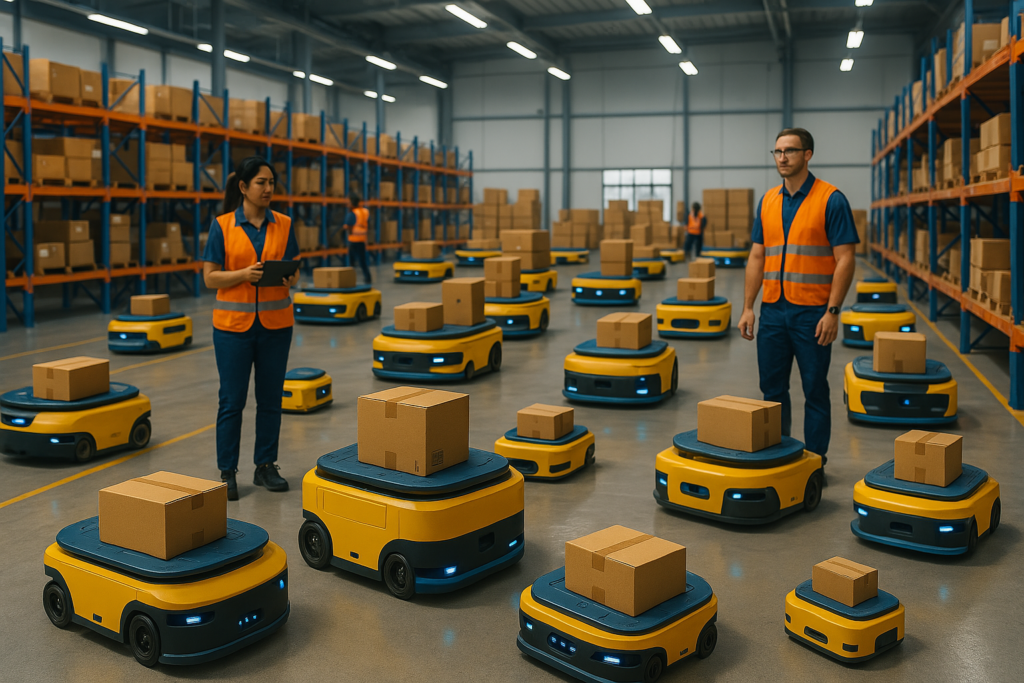In short:
- Amazon is rapidly expanding the use of robotics in its fulfillment and delivery networks.
- The move is part of an effort to reduce dependence on human labor, improve efficiency, and meet increasing consumer demand.
- New technologies include mobile robots, robotic arms, and automated delivery vehicles.
- The expansion raises questions about job displacement, labor rights, and the future of warehouse work.
- Amazon claims the robotics integration will enhance safety and create higher-skilled tech jobs.

In a significant leap toward automating its operations, Amazon.com has announced an accelerated rollout of robotics across its fulfillment centers and delivery systems. As one of the world’s largest and most influential e-commerce companies, Amazon’s decision marks a pivotal shift in how goods are picked, packed, and delivered. This strategic move aims to enhance operational efficiency, reduce dependency on manual labor, and position the company at the forefront of technological innovation in retail logistics.
This blog explores Amazon’s ambitious robotics plan, the technologies involved, the implications for its workforce, and what it signals for the future of work and e-commerce.
The Evolution of Robotics at Amazon
A Brief History of Automation in Amazon
Amazon began integrating automation in 2012 when it acquired Kiva Systems, a robotics company that specialized in mobile robotic systems. Since then, Amazon Robotics has evolved significantly, with over 750,000 robots currently deployed in various roles across its warehouses.
Why Now? The Push for Acceleration
Increased consumer demand, rising labor costs, and global supply chain pressures have driven Amazon to scale up its robotics deployment. The COVID-19 pandemic exposed vulnerabilities in manual labor-dependent systems, prompting Amazon to double down on automation to future-proof its logistics.
Key Technologies Powering Amazon’s Automation
1. Proteus: The Autonomous Mobile Robot
Proteus is Amazon’s first fully autonomous mobile robot designed to move packages in fulfillment centers. Unlike earlier versions that operated in isolated zones, Proteus can navigate safely in spaces shared with human workers.
2. Cardinal: Robotic Arm with Vision System
Cardinal is a robotic arm powered by AI and computer vision, capable of sorting and lifting heavy packages. This reduces worker strain and speeds up order processing.
3. Sparrow: AI-Powered Item Handling Robot
Sparrow represents a significant advancement in robotic dexterity. It can identify, select, and handle millions of different products using machine learning and custom grippers.
4. Delivery Drones and Scout Robots
Amazon is expanding its last-mile delivery innovations with drones and Scout, a small self-driving delivery robot. These technologies are currently being piloted in select regions.
Strategic Benefits of Robotics Deployment
Efficiency and Speed
Automated systems can operate around the clock with minimal downtime, enabling faster order processing and delivery.
Scalability
Robots can be rapidly deployed across warehouses without the logistical constraints of human workforce recruitment and training.
Cost Reduction
While the upfront investment is significant, automation reduces long-term costs associated with wages, training, healthcare, and turnover.
Enhanced Safety
Amazon claims robotics reduces the need for humans to perform dangerous or physically strenuous tasks, lowering injury rates.
Human Impact: Jobs, Skills, and Concerns
Job Displacement Concerns
Labor unions and worker rights advocates express concern that increased automation could result in significant job losses in low-skill roles.
Transition to Tech-Oriented Roles
Amazon asserts that while some jobs will be phased out, others will be created. Roles in robot maintenance, AI operations, and systems management will require upskilling and retraining.
Worker Experience and Sentiment
Reports indicate a mix of anxiety and optimism among Amazon’s workforce. While some embrace the shift, others fear instability and dehumanization in the workplace.
Global Implications and Competitive Advantage

Setting the Industry Standard
Amazon’s scale allows it to test, refine, and deploy robotic systems faster than competitors, setting benchmarks for retail automation.
Influence on Supply Chains
Automation will likely lead to more resilient, responsive, and decentralized supply chains. Other retailers may follow suit to remain competitive.
Pressure on Labor Markets
If widely adopted, such automation could impact employment patterns in logistics and warehousing globally.
Regulatory and Ethical Considerations
Labor Rights
Governments may need to redefine labor laws to address automation-related job displacement and ensure fair working conditions.
Data Privacy and Surveillance
Advanced robotics systems often rely on worker-tracking data. Transparency and data protection will be critical to maintaining trust.
Environmental Impact
While robots are electric and can be eco-friendly, their production and disposal raise sustainability questions that Amazon must address.
What the Future Holds
Toward Fully Autonomous Fulfillment Centers
With advancements in AI and robotics, Amazon could operate fully automated warehouses in the near future, significantly cutting human labor.
Hybrid Workforce Models
We may see a hybrid model where humans and robots collaborate, combining cognitive flexibility with mechanical efficiency.
Rise in Robotics Startups
Amazon’s success will likely spark investment and innovation in robotics startups aiming to service the logistics sector.
Conclusion: A Paradigm Shift in E-Commerce Fulfillment
Amazon’s aggressive robotics rollout represents more than a technological upgrade—it is a reimagining of how commerce operates at scale. As the line between human and machine work blurs, the key challenge lies in ensuring a just transition for the workforce while maintaining innovation and efficiency.
This transformation, if managed responsibly, could set a blueprint for the global retail industry. But it will require continuous dialogue between corporations, governments, and society to balance growth with human dignity.









+ There are no comments
Add yours